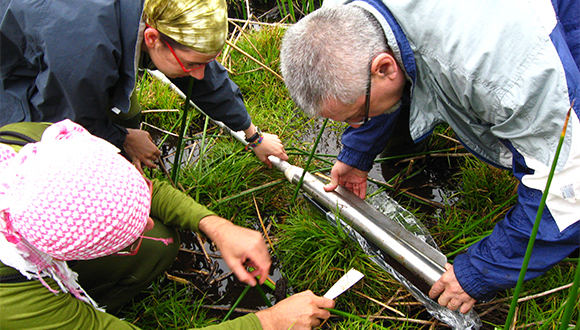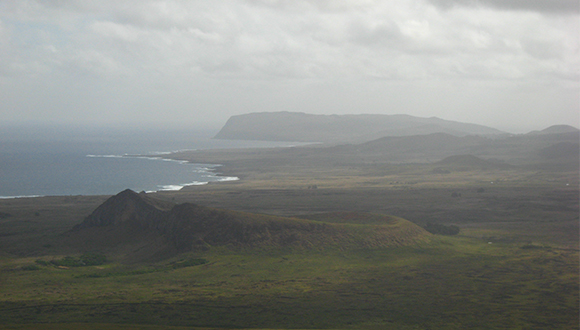Deforestation of Easter Island was gradual and due to more factors than just human pressure
Researchers from ICTJA-CSIC, CREAF and the University of Barcelona have extracted a number of sedimentary samples from lake bottoms on the island. These samples have allowed the reconstruction of environmental changes over the past 3,000 years including history of its climate, ecology and culture. The pollen records that had been relied upon previously for such work were not continuous and their interpretation led to the erroneous idea that deforestation of the island was sudden and caused exclusively by human over-exploitation.

Until recently it had been thought that the total and sudden deforestation of Easter Island a thousand years ago was due to an over-exploitation of natural resources by the inhabitants of the island, leading to the collapse of their civilization. Now, a team of scientists from the Jaume Almera Earth Sciences Institute (ICTJA-CSIC), the University of Barcelona (UB) and CREAF have been able to reconstruct 3,000 years of the island’s history by studying sedimentary samples of the three large lakes and peat bogs on the island (old volcano craters). This work has shown that the deforestation was not sudden, but gradual, and that it didn’t occur over the whole island at the same time. This latest contribution to the story of Easter Island, published in the journal Frontiers in Ecology and Evolution, puts the traditional hypotheses about its natural history into question.
Scientists who study historical environmental changes extract samples from the earth with long probes and study lake bottom sediments accumulated over many years. The changing characteristics of the different layers with depth, such as pollen contents or composition, tell the history of the lake. By studying these sediments it is possible to make inferences about the surrounding landscape and climate at the moment they were deposited.

This was the technique used to carry out this study, and the novelty lies in the fact that it was possible to obtain a complete, unbroken testimony of the previous 1,000 years, without any of the temporal lapses that can be caused by episodes of erosion, drought, or other factors. The final product, a reconstruction of the past 3,000 years without interruption, shows that deforestation was not sudden but rather gradual, and that it didn’t happen throughout the whole island at the same time.
The samples revealed that there were different episodes of vegetation change on the island, manifesting as changes in the organic matter accumulated in the soil.
In fact, the samples revealed that there were different episodes of vegetation change on the island, manifesting as changes in the organic matter accumulated in the soil. This is accompanied by the fact that there were prominent droughts over the same period, which could have played an important role in the deforestation and a significant influence on island society. “This puts into question the classic interpretations of cultural decay and ecological degradation attributable only to human causes,” says Valentín Rull, ICTJA-CSIC researcher and first author of the study, adding “it seems that a long and gradual succession of interrelated climatic, ecological and cultural changes have led to the current situation”.

Previously, only incomplete records had been used
Up to now the hypothesis about ecological and cultural collapse was based on studies of pollen records from lakes, but these records were plagued by gaps of hundreds of years. Their interpretation depicted radical changes in the landscape, such as rapid replacements of palm forests with fields of grasses, but the character and complexity of such changes was fuzzy. According to the scientists participating in the new study, it is for this reason that it was necessary to accompany pollen analyses with indicators of other important factors such as precipitation. On an island as small and isolated as this one, 3,000 km from the continent, ecosystems are very sensitive to the combined effects of human activity, the arrival of new species, and climatic variability.

ARTICLE
Rull, V., Cañellas-Boltà, N., Margalef, O., Pla-Rabes, S., Sáez, A., and Giralt, S. Three millennia of climatic, ecological and cultural change on Easter Island: an Integrative overview. (2016) Frontiers in Ecology and Evolution, 4, doi: 10.3389 / fevo.2016.00029.







